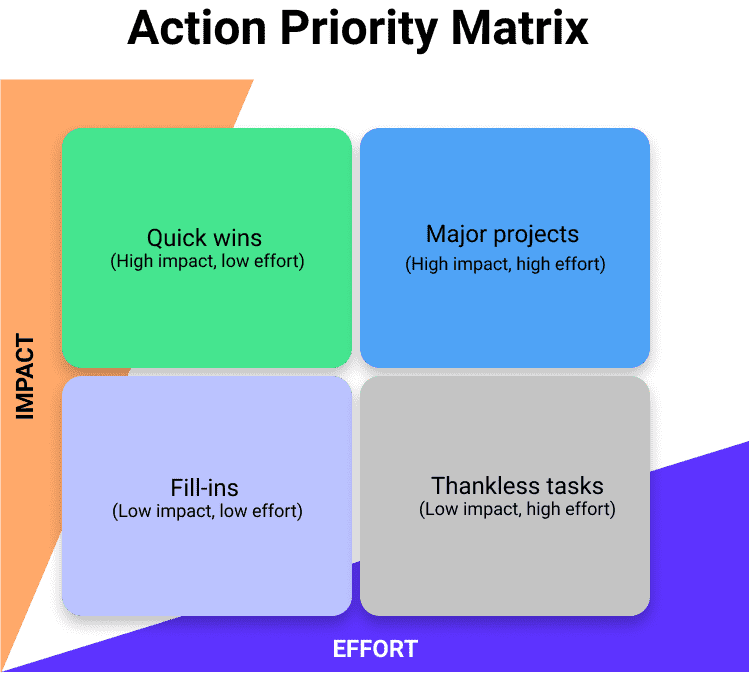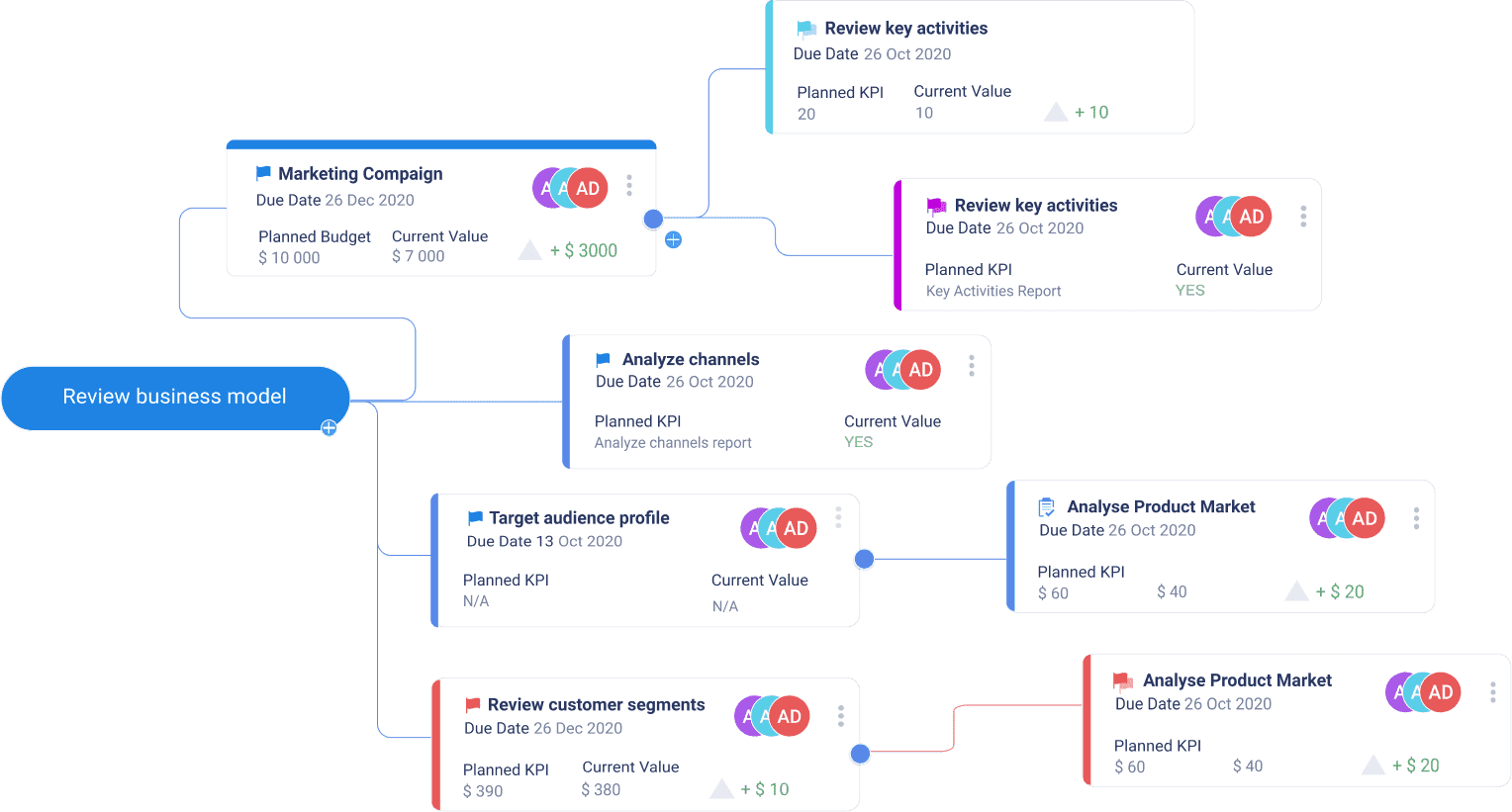What is Action Priority Matrix?
An action priority matrix is a time and project management tool that helps teams determine the tasks to focus on and set priorities. It is especially useful for managing large initiatives and can serve as a basis for developing production schedules to maximize ROI.
Taking the form of a four time management quadrant diagram, this matrix breaks tasks out into two dimensions: urgency and importance, impact and effort.

The Four Quadrants
Placed along two axes, Impact and Effort, are four boxes:
- Quick wins (High impact, low effort). These are high-value tasks that are critical and urgent to complete. Do them immediately!
- Major projects (High impact, high effort). Tasks in this quadrant are high-value, but not time-sensitive, which often results in them being postponed. To avoid this, set deadlines and include them in the schedule.
- Fill-ins (Low impact, low effort). Those are less important tasks with no set deadlines. They can be delegated or even declined.
- Thankless tasks (Low impact, high effort). These tasks are time-consuming yet have little impact on ROI. Avoid them in the schedule.
How to create an action priority matrix
- Creating a priority matrix starts with copying the graph above. Then you can plot all initiatives and ideas and assess their effort-to-impact ratio.
- Make a list of initiatives – including all current projects and goals from daily tasks to long-term innovations. This can be done on a simple whiteboard or in a dedicated planning application.
- Make a rating – the most common approach is to rank each task by its impact on the business and separately by the required effort on a scale of 1-10.
- Plot your initiatives into quadrants – now that you have two scores for each task, you can map them onto the matrix. For example, tasks that score 1-5 in impact and 6-10 in effort will go to Thankless tasks, and tasks that score 6-10 both in impact and effort will be Major projects.
- Set priorities – finally, the team needs to decide how to prioritize the order of the tasks. This is the trickiest part because there are no universal guidelines, and priorities should be assessed individually for the designated period.
How to make the most of an action priority matrix?
First, a priority matrix visualizes thankless tasks and fill-in projects that can be avoided completely or delegated to external teams.
After the task list is reduced to essential goals, the team needs to agree on which tasks to tackle next. It might be that a significant and important project will take all their resources and leave no space even for urgent quick-win tasks. Or, on the contrary, the team might wish to focus on quick-win initiatives, which will increase momentum and build up enthusiasm to get ready for more difficult tasks.
Though an ideal schedule will have only “quick wins”, in reality, each project will have tasks from each quadrant, and it is the task of project and operation managers to prioritize them to make the most of the available resources. Still, having a priority map will take advantage of your brain’s cognitive ability to focus on the most important tasks and boost your brain power – and ROI.



